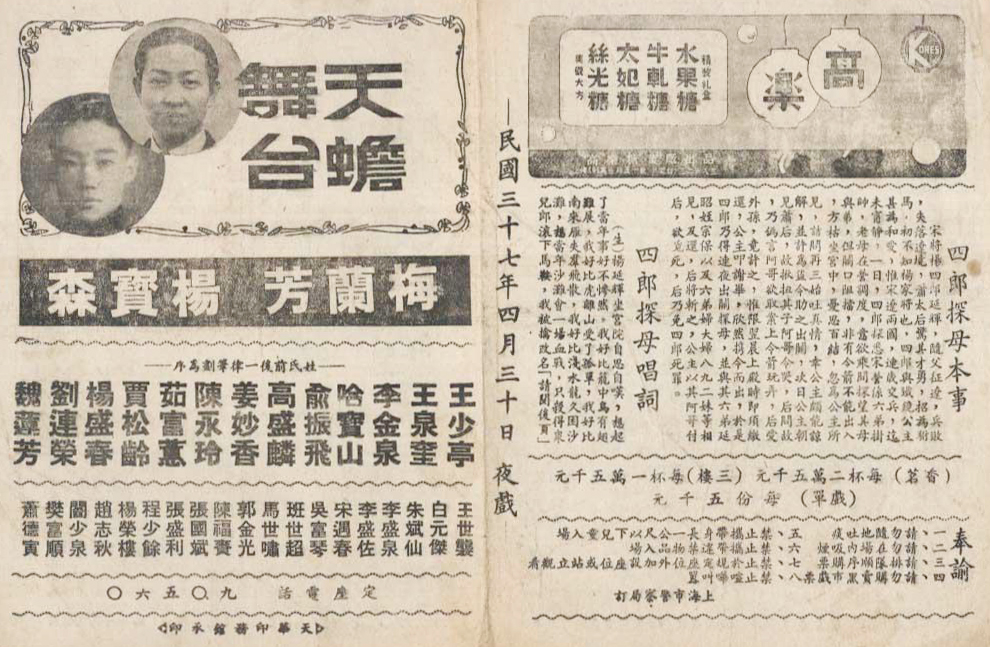Vintage playbills offer window into Mei Lanfang’s Peking opera

Elaborate playbills of Mei Lanfang vividly record essences of Mei’s opera and capture the ups and downs of Chinese Peking opera in history.
A playbill, called a program or performance specification today, is a handwritten or printed booklet recording all performance details, such as the performance group, play (repertory), actors and actresses, time and theater.
The primary function of a playbill is just to offer a performance’s vital information to the audience. A playbill is nothing but a piece of paper. It costs little or comes with the ticket. Audiences often throw playbills away after operas. There are few preserved playbills from the early years of Chinese theaters. Playbills from the shows of earlier great masters and celebrated Peking opera performers are even more precious.
In his memoir Forty Years on Stage, Mei Lanfang (1894-1961), a great Peking opera artist and master, specifically talked about playbills in the late Qing Dynasty. Mei said there were two kinds of playbills at the time. One was printed by a stamp on a piece of yellow thin scrip as large as two matchboxes. The other was hand-painted using a Chinese brush on red paper. These two playbills only contained information about specific plays instead of actors or actresses. Starting from the late reign of Emperor Guangxu (1871-1908), the playbill gradually became standardized. Play, actors and actresses, theater (or xiyuanzi in Chinese, a location for performing traditional Chinese operas), date and many other pieces of information were added. And the quality of playbill printouts improved.
The academic value of playbills comes from accurately recording performance information. These playbills constitute a vivid record of Peking opera performances in China. Applying academic methodologies to research on playbills can help us examine some certain actors’ and actresses’ dates of birth and death, the rise and fall of stars, and popular plays in a certain period. Vintage playbills from the late Qing Dynasty and Republican period (1912-49) possess the value of historical data, and there is an art to arrang plays, actors and actresses on such a piece of paper.
Among these vintage playbills of Peking operas, playbills of Mei, undoubtedly, are the most valuable and significant ones, which are determined by Mei’s outstanding achievements, lofty reputation and status in the history of Chinese operas. The general features of playbills of Mei are elaborate design, exquisite printing, large format and quality paper. Through these vintage playbills, we can study Mei’s operas from different periods, learn about changes to the cast of Mei’s opera troupe, and explore how various plays were arranged and scheduled. Furthermore, the ups and downs of box office at different places, and ticket prices of Mei’s operas at that time can be figured out.
Gu Shuguang is from the Research Center of Chinese Opera at Renmin University of China.
